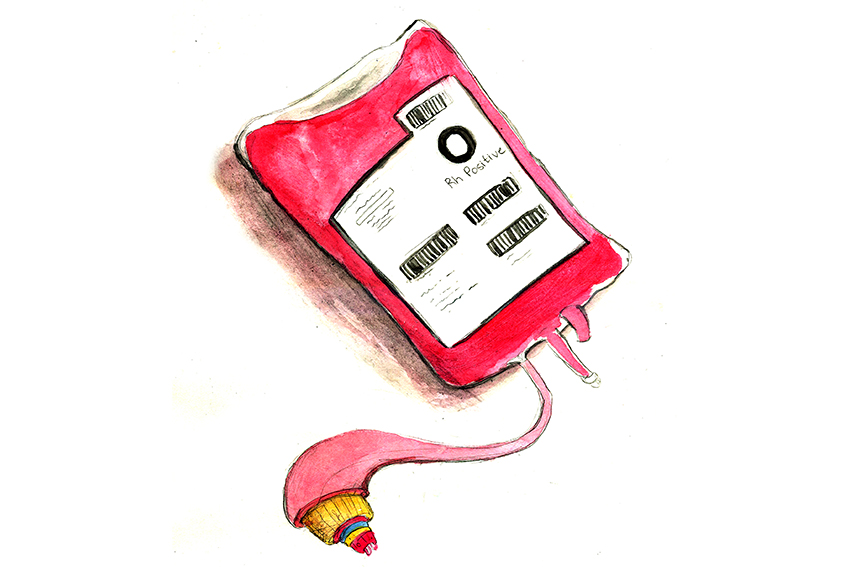According to the American Red Cross, every two seconds someone in the U.S. needs blood. Even though 38 percent of the population is eligible to give blood, less than 10 percent actually do so. Many evade the act of charity due to a fear of needles. However, the small sacrifice of discomfort and an hour of time could save multiple lives.
The idea of a needle being inserted into the arm may appear daunting for many eligible donors, but Nicholas Canedo, donor engagement manager at We Are Blood, a non-profit blood center in Texas, said that most donors do not experience difficulty when donating.
“Less than 0.28 percent of people who donate have an adverse reaction,” Canedo said. “It is usually quite minor.”
One of the problems is that blood only has a shelf life of 42 days, and there must be donors giving all the time in order to keep up the supply. Canedo also said people should change the way they think about blood’s status as a vital resource.
“I think that people don’t think about blood as an important resource as often as they should,” Canedo said. “It cannot be created artificially.”
Canedo said blood recipients can range from leukemia patients, mothers who experienced uncontrollable bleeding during birth and victims of accidents, such as Brian Boyle, a triathlete and the American Red Cross National Partnerships Officer.
According to Boyle’s doctors, he should not have survived his car accident 14 years ago.
Boyle said he endured countless injuries, including shattered ribs, a shattered pelvis, laceration of the kidneys and liver, nerve damage to his left shoulder, collapsed lungs, his heart moved across his chest and the loss of percent of his blood. Boyle said his life was saved by multiple surgeries, being resuscitated 8 times during his two month long coma, 36 blood transfusions and 13 plasma treatments.
Now fully recovered, Boyle said he has completed five Ironman triathlons, 16 marathons and several ultramarathons. Boyle said he is grateful for the opportunity he was given at a second chance at life — or a ninth chance at life, if you count his 8 resuscitations. Most recently, Boyle ran a 100 mile ultramarathon on behalf of 100 blood donors.
“I always have my 36 little red crosses on my race suits to represent my blood donors so I’ll always raise awareness and also have that platform to show the appreciation,” Boyle said.
The American Red Cross says that a single car crash victim may need as many as 100 units of blood. However, not all of the most needy recipients are car crash victims.
Jordan Renwick, an 18-year-old with anemia, was nearly comatose when she realized she was iron deficient.
“Your hemoglobin level is supposed to be 12. Jordan’s was at 4,” Sam Renwick, Jordan’s mother, said.
It took Jordan a long time to notice her grave hemoglobin deficiency, as her symptoms of exhaustion and dizziness were initially misdiagnosed as a symptoms of an anxiety disorder.
“I couldn’t walk up a flight of stairs. I would walk 10 meters and get exhausted,” Renwick said.
Without the blood transfusions, Renwick would have gone into a coma.
These are just two anecdotes of people who were gravely in need of blood. An hour of time and enough courage to surmount a fear of needles could be enough to save a life.
“Blood is a critical saving gift,” Boyle said. “[It] really gives someone like myself the chance at a lifetime.”















